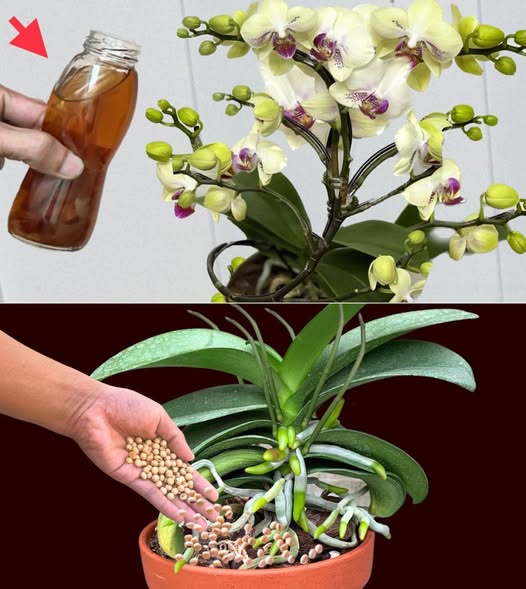Orchids generally need to be watered once a week, but this can vary based on the humidity and temperature of your home. A good rule of thumb is to water when the top inch of the potting mix feels dry to the touch. Overwatering can lead to root rot, so be mindful not to water too often.
During the warmer months or if your home is particularly dry, you may need to water more frequently, while in cooler months, watering can be reduced.
Proper Watering Method:
Bottom Watering: Place your orchid pot in a shallow dish of water for about 10-15 minutes. This allows the water to soak into the potting mix through the drainage holes. Afterward, remove the pot from the dish and let any excess water drain away. This method ensures that the roots receive moisture directly.
Top Watering: If you prefer top watering, gently pour room temperature water over the orchid’s potting mix until the excess water starts draining out of the bottom. Be careful not to leave any standing water in the pot to avoid root rot.
Water Temperature:
Always use room-temperature water when watering your orchid. Water that is too hot or cold can shock the plant’s roots and cause damage. Avoid using tap water with high levels of chlorine or salts, as this can harm your orchid over time. Distilled or rainwater is ideal.
Watering During the Growing Season:
During the active growing season (spring and summer), orchids will require more water, as they are actively producing new roots and flowers. Be sure to adjust your watering frequency according to the needs of your specific orchid.
Humidity and Misting:
Orchids love humidity, so it’s beneficial to mist them with a fine mist of water a few times a week, especially if your home is dry. Alternatively, you can place your orchid on a humidity tray filled with water and pebbles to increase moisture around the plant.
Drainage and Excess Water:
After watering, always check the pot to ensure that excess water has drained away. Never leave water standing in the pot or saucer, as it can lead to root rot. If you notice any stagnant water in the saucer, discard it immediately.
Serving and Storage Tips:
Please Head On Over To Next Page Or Open button (>) and don’t forget to SHARE with your Facebook friends.



Yo Make również polubił
Ciasto kretowe z tacy – przepis na kubek
Pesto and Parmesan Rolls
Slow Cooker Cracker Barrel Fried Apples – A Warm, Comforting Treat
Fried Jalapeños with Brie and Drizzled Honey